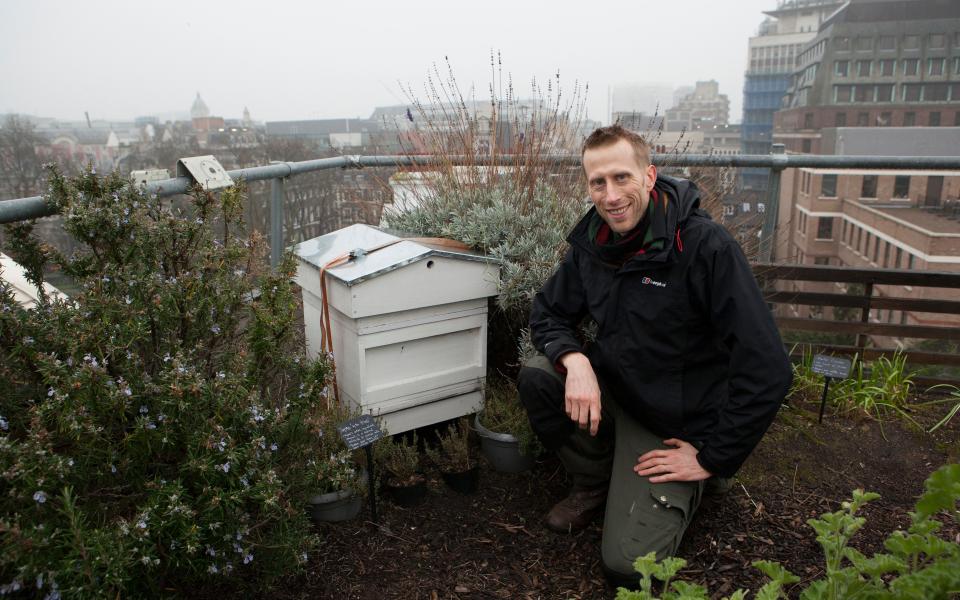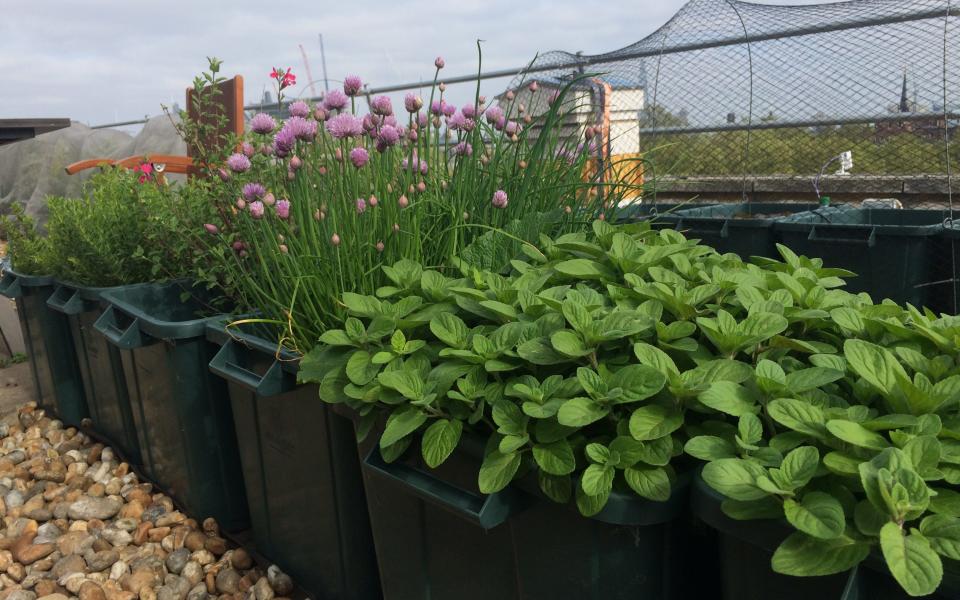Rooftop farming: how nature flourishes on London's skyline - plus the top 5 edibles for beginners

The winter purslane at the five star Rosewood Hotel in Holborn is excellent. Served immediately after picking, it is sweet and fresh. Amandine Chaignot, the hotel’s head chef, tells me it’s the best crop they've ever had. However, I’m not eating it in the marble-walled serenity of the restaurant, but in the wind and drizzle on Rosewood’s roof, where it is grown.
The Rosewood London is one of three “sky farms” in the part of London that is calling itself Midtown – the pocket of buses, offices and chain food outlets between Bloomsbury, Holborn and Clerkenwell. Another is sandwiched on a terrace on the first floor of an office block and a third is perched on top of the Cordon Bleu cookery school, which overlooks the gently peaked roof of the British Museum.

Sean Gifford set up Sky Farmers five years ago after leaving a job with organic company Lush cosmetics. Sky Farmers' premise is simple: to change the way people see food by growing it locally.
In a city, that means making the most of every bit of space available – and it transpires that the tops of large buildings provide a lot of room to grow.
Gifford has transformed these wind-blown, sun-exposed spaces into enormous container gardens. Although the Sky Farmers team sets up the farms in the first place (a more complicated process than it may sound – you try hefting 18 tonnes of compost in 20 kilogram bags through a five star hotel) and maintains them, much of the tending is done by volunteers from the buildings they sit on.
In the case of Le Cordon Bleu and The Rosewood that would be chefs, who are learning about their ingredients in the process, but at the office block it’s lawyers who roll up their sleeves on their lunch break.

Gifford has mastered a number of ingenious ways to grow in urban landscapes all year round. While I'm touring the sky farms on a particularly unpleasant day in early February, there is a lot of life going on.
Mustard, 'Arctic King' lettuce and rainbow chard emerge from the re-appropriated recycling crates which comprise many of the planters (they are cheap, eco-friendly in their re-use and, essentially, lightweight.
With holes drilled in the bottom they are perfect for small crops), three-cornered leeks tumble over the sides of containers and mint puts on a good show against the cold.
While the country bemoans a courgette crisis, mizuna, green-in-snow, buckler leaf sorrel and lambs lettuce thrive in these most unlikely of gardens.
Get growing | Top 5 edible plants for beginners
Biodiversity is a big part of Sky Farmers’ ethos, and as well as the planting and pest-control being chemical-free (although owing to Soil Association restrictions on acknowledging container gardens, the farms aren’t officially “organic”), these urban farms also house wormeries and beehives. Small plots of nettles are allowed to grow because their stems, over winter, provide “homes for allies” – the ladybirds Gifford bought online, were delivered in a box, and now dine on the aphids in the garden.

While the modest greenhouse at the office block currently houses a lemon tree, in the summer it will produce 1,500 vegetable seedlings.
But Gifford recommends Organic Plants as a provider of a diverse range of quality plug plants, and for rookies wanting to grow at home they are perfect, bundling up plants by seasonality to take some of the confusion out of growing produce.
The Sky Farms provide inspiration for those who think small spaces put a stop to growing food. The garden on top of the Cordon Bleu is tiny, but possibly my favourite. A huge rosemary bush grows joyfully in the warm, cake-scented air that puffs endlessly out of the cookery school’s extractor fans. “It flowers four times a year”, Gibson says.

There’s also stevia, the leaves of which taste 130 times sweeter than sugar (I know because Gifford is very enthusiastic in making me eat everything possible), and is happily overwintering despite hailing from South America.
Fennel loves its windy, sun-exposed situation and there’s a self-seeded gorse bush just beyond the rail where health and safety stops humans from going. As a result, it is massive. Proof, perhaps, that nature can choose to flourish in urban environments, if only it is given half a chance.
A post shared by Alice Vincent (@noughticulture) on Feb 10, 2017 at 3:52am PST
For more urban gardening, follow Alice on Instagram.com/noughticulture


